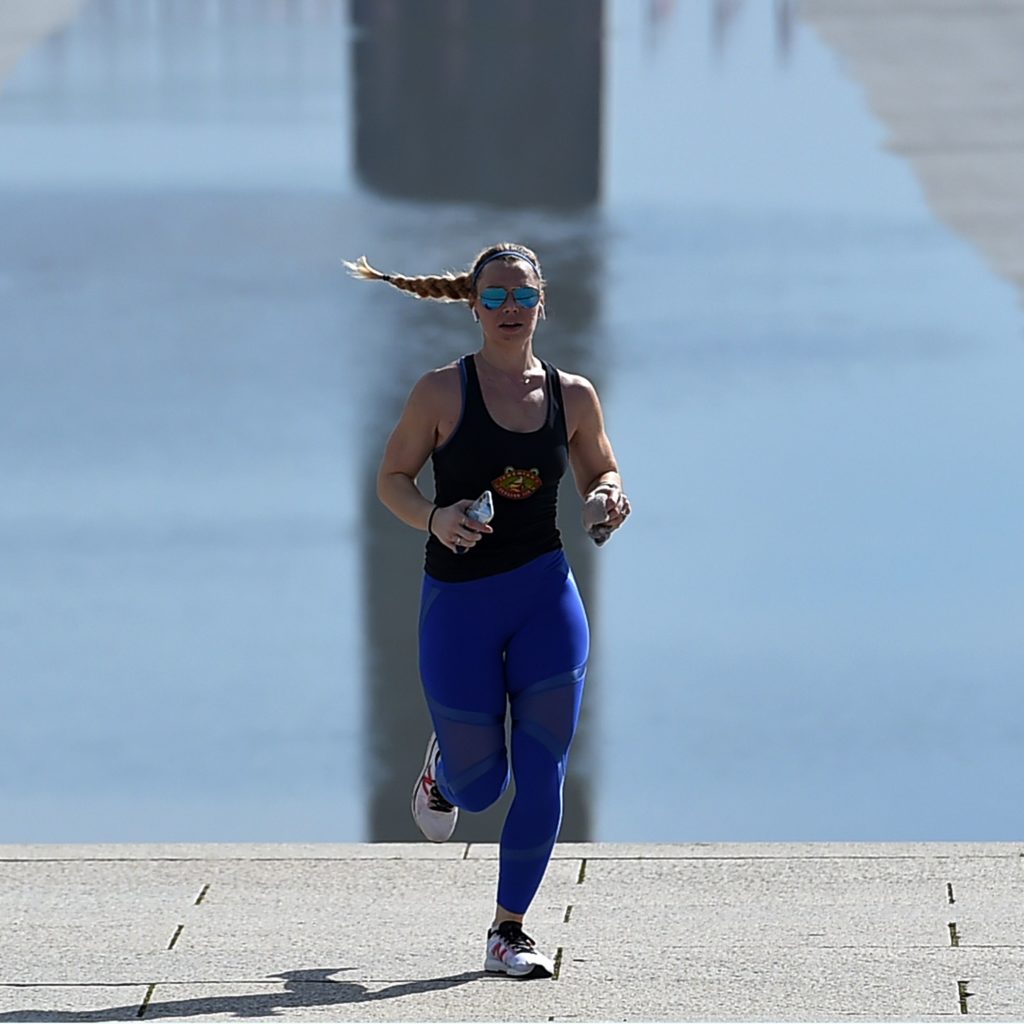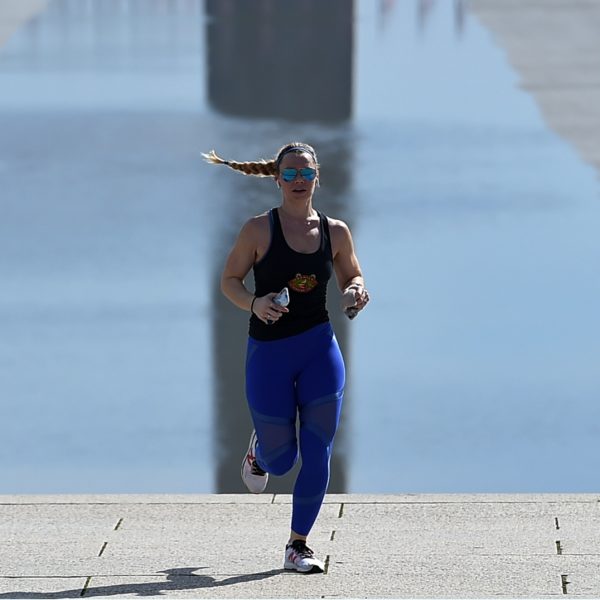
ICU Docs to Runners: Don’t Let Your Guard Down – runnersworld.com
ICU Docs to Runners: Don’t Let Your Guard Down runnersworld.com
Seven weeks after most of the country shut down to combat the spread of the coronavirus, the mindset is starting to shift. Not only are some restaurant and retail establishments reopening, runners, too, are seeing signs of a return to previous activities. Jack and Jill’s Downhill Marathon and half on July 25 and 26 in North Bend, Washington, announced plans to hold the races with new social distancing measures in place—pending permit approval from local government.
But the nationwide news about the spread of COVID-19 is not good: Infections and death rates are projected to get worse, not better, in May and June.
Runner’s World spoke to four doctors, all athletes, who are currently working grueling hours in intensive care units in Boston, Seattle, and Columbus, Ohio. They emphasize that the coronavirus doesn’t spare runners. Fitness offers no immunity. Your enviable resting heart rate won’t necessarily stop you from getting sick in the first place—or from getting a severe case.
At Massachusetts General Hospital in Boston, for instance, the median age for patients in the ICU is 58, which means half are younger, some as young as in their 20s. They tend to skew male, but women get it, too. Many have preexisting conditions; others have none. Yes, they’ve treated recreational marathoners.
“If you have COVID-19 would you rather not have hypertension and diabetes? Absolutely,” said Dr. C. Corey Hardin, associate director of the Cardiopulmonary Exercise Lab at Mass General. “If you don’t have diabetes and hypertension, are you safe? No, absolutely not. We’ve certainly seen healthy endurance athletes that have severe cases.”
Here’s the advice they had to give runners who are tempted to rejoin a running group, organize a race, or ease up on social distancing.
The sickest patients may never be able to regain their full physical capabilities…
It’s too soon for scientists and doctors to say exactly what will happen to patients who recover from COVID-19. But they have a pretty good idea what life will look like for those who end up on mechanical ventilation.
That’s because severe forms of pneumonia in COVID-19 patients often lead to Acute Respiratory Distress Syndrome (ARDS). And although ARDS is relatively rare, doctors have seen plenty of it.
Dr. Mark Wurfel, a runner and professor of pulmonary, critical care and sleep medicine at the University of Washington School of Medicine, says that ARDS is injury to the lungs that results in the accumulation of inflammatory cells and excess fluid in the alveoli [air sacs]. The lungs aren’t able to do their normal task of absorbing oxygen and excreting carbon dioxide.
“Lung injury does happen at a low level in all people with pneumonia,” Dr. Wurfel said. “From a practical perspective, ARDS is when the injury to the lung is so severe that it usually requires high-level support with a ventilator and intensive care.”
The numbers aren’t encouraging. About 30 percent will die. Others will recover, but their lives are forever changed. Only half of those will return to work within a year.
Doctors say that patients who survive their time on a ventilator recover most or all of their lung function. But many are left with lasting weakness that limits their physical capabilities. They also face psychological effects, like depression, PTSD, and mild cognitive impairment.
“It’s a brush with death, without any question,” said Dr. David Ziehr, a fellow in pulmonary and critical care medicine at Mass General (and an Ironman triathlete with a best time of 10:29).
Experts aren’t quite sure why lung function recovers, but physical ability doesn’t. Doctors rely on something called the six-minute walk test, measuring the distance covered in six minutes, at a year after hospitalization. It’s usually about three-quarters of what would be expected. “It’s a little perplexing that the lung function gets better, but patients continue to experience profound weakness,” Dr. Ziehr said.
…but those patients benefit from early exercise in the hospital
Scientists and doctors helping people recover from ICU stays believe that the key to promoting recovery and avoiding some of these negative side effects is exercise.
Dr. Nathan Brummel, associate professor of medicine in the division of pulmonary, critical care and sleep medicine at Ohio State University in Columbus, says patients with ARDS and deeply sedated on a ventilator are immobile. That immobility is likely why they develop that poor physical function when they leave the hospital. “One of the struggles has been to keep these patients who are requiring high ventilator settings awake, comfortable—and moving,” he said.
In an ideal situation—if an ICU stay can ever be considered ideal—even while patients are still on the mechanical ventilator, they are awake and able to work with physical therapists to sit up at the edge of the bed, stand, and walk. They’re able to interact and follow commands.
Such early mobility in the hospital appears to be crucial in promoting recovery. That’s in part what Dr. Brummel researches: He tracks physical activity during hospitalization, how much patients move around while they’re sick, and how such movement affects their longer term health.
Although his latest research study has been suspended in order to preserve personal protective equipment for doctors and nurses, work in this area shows something that makes intuitive sense to anyone who has ever loved running: The more patients move during hospitalization, the better they will do in the long term.
Being a runner will not protect you from getting the coronavirus. But it could make your recovery easier.
Seven weeks after most of the country adopted strict social distancing measures, there is still so much that is unknown about the coronavirus. Why does it affect some and not others? Which drugs are effective? How, exactly, does it transmit? (Is six feet enough space to maintain between runners? Should it be more?) How will patients recover from COVID-19 down the road?
It’s too early to tell. After all, this is new—there’s a reason why it’s called the “novel” coronavirus. But for runners, the previous research on other similar diseases is reassuring: People who are fitter before they fall ill tend to recover faster.
“What we see for all other forms of severe disease is that people who are in good shape tend to do better overall,” said Dr. Wurfel, who is currently running 35–40 miles a week. “It’s pretty safe to assume that’s going to be the case for COVID-19. That’s the broad message for people—being in good shape is still a good idea. If you are in good aerobic shape, you will recover better, and your overall survival rate is better.”
In other words, if you like running? Keep running. It’s one of the best things you can do for yourself. A pandemic is not a good time to abandon your exercise routine.
“It’s absolutely critical that we continue doing the things that keep us healthy, physically and psychologically,” said Dr. Ziehr. “For so many of us, without running or whatever it is that strikes that balance, we would go crazy.”
In most cases, the more exercise you do, the better it is for you. That said, this is not a time for you to ramp up your mileage significantly or suddenly bump up the intensity, which can lead to injury, weaken your immune response, and make symptoms of illness harder to discern.
“Typically, if I had a weekend off, I’d be riding for 5 to 6 hours, I’d get home and I’d be completely wrecked,” Dr. Ziehr said. “Those are things I’m not doing right now. I’m avoiding overtaxing myself. Because I need to be able to show up to work, but I also don’t want to be confusing massive muscle fatigue as myalgias [muscle aches] from COVID. This is maybe a period not to try to run a marathon PR.”
Maintain social distance. Cabin fever is no excuse for meeting up with the running group.
A vaccine for COVID-19 is months or years away. The only practical way right now to prevent the spread of the virus is social distancing. Runners need to stay motivated to keep running—even though they don’t have races to train for or friends to meet with.
“Maintaining social distancing is the single biggest thing we can do to help the doctors and nurses in the hospitals,” Dr. Brummel said.
That’s why it’s frustrating for them to see young, healthy people flouting social distancing guidelines. For runners and cyclists, training in groups is out of the question until the coronavirus statistics begin to improve. Dr. Ziehr said he’s had to reprimand a couple of his cycling friends on that topic.
And need a reminder that it’s best to run alone or at least six feet apart from your running friend at all times? He has a stern warning about how COVID-19 could affect your fitness.
Just about any adult is susceptible to the virus. “It could take a mild course or it could take a very severe course,” Dr. Ziehr said. “We don’t know enough at this point about saying what course it will take in who.”
That means that there are few greater risks right now, he said, to your athletic performance than COVID-19 pneumonia or ARDS. “That will set you back like nothing else. If your concern is really your athletic performance, you’re going to want to maintain your social distance from people.”
Doctors warn that social distancing is likely going to have to last longer than anyone wants, forcing the running community into other ways of maintaining camaraderie.
If you get sick, keep moving even a little bit if it’s possible. Pacing around your bedroom is better than nothing. Do not leave your house.
Despite all the benefits of running for your health—physical and psychological—it does not make you immune to infectious diseases. “So you should do everything you can not to get COVID-19,” said Dr. Hardin of Mass General. “And if you do get it, you should take care of yourself, rest up, and get over it. And then you can resume running afterwards.”
If you feel up to it, a little bit of movement is better than lying immobile on the couch all day. But that comes with caveats, of course: Do not go outside. If you have it and other members of your household do not have it, you should isolate yourself from them. Don’t use the kitchen and don’t use the same bathroom, if that’s possible.
But even short walks, around the couch or across the bedroom, a couple of times a day, are better than nothing. Those will help preserve your muscle strength and prevent blood clots. They might also give you an idea of how you’re doing.
“If you feel short of breath when doing that, you should contact your healthcare provider,” Dr. Hardin said. “It could potentially be a sign of worsening disease.”
But the majority of people will rest up and feel a lot better in a couple of weeks. Amid the dire death toll projections, runners shouldn’t forget that most cases—about 80 percent—are mild.
For runners, your first run back will likely feel terrible, Dr. Hardin said. But after some time, you’ll be able to return to running at your previous pace. And that’s a day to celebrate.
Sarah Lorge Butler is a writer and editor living in Eugene, Oregon, and her stories about the sport, its trends, and fascinating individuals have appeared in Runner’s World since 2005.
